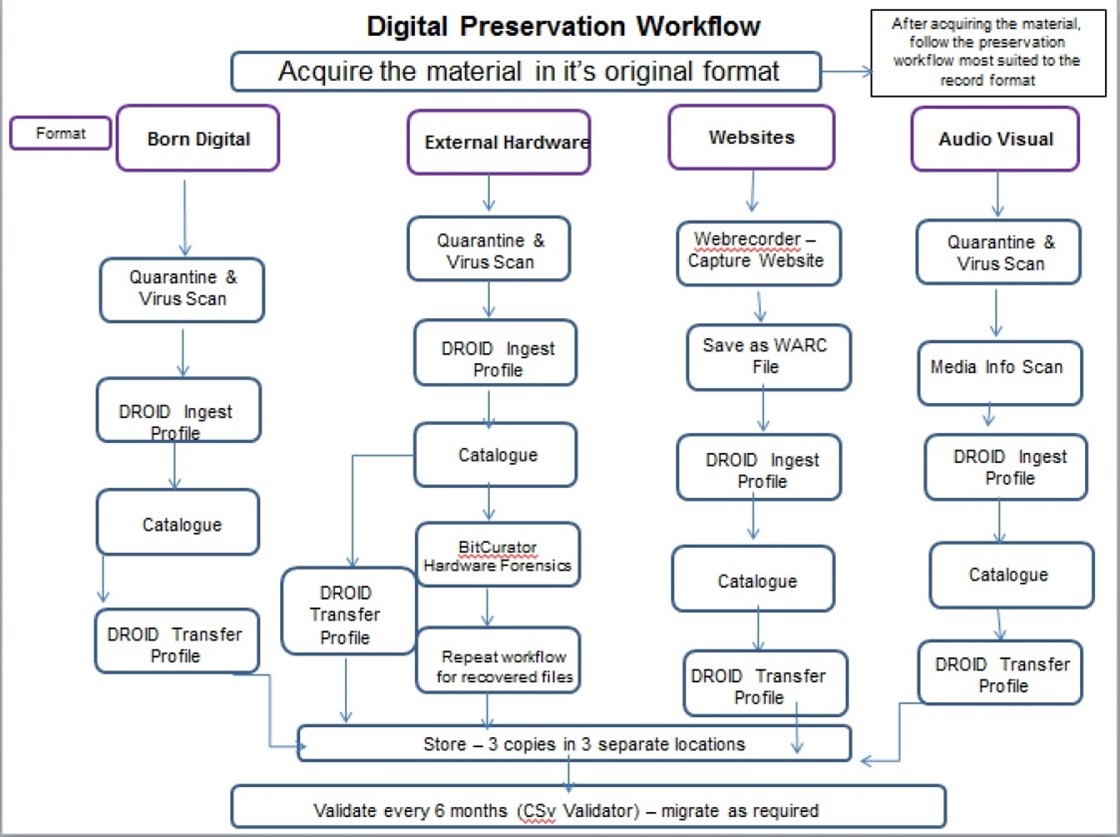Karyn Williamson is Company Archivist for abrdn.
The only thing certain about working for a ftse 100 company is that change is inevitable, and this is certainly true of abrdn. Since Standard Life Aberdeen was formed, the company has transformed from a historic pensions and life insurance business to a rebranded futuristic fully-fledged investment company.
As the company worked its way through this transformation, the digital futurist objectives of the company meant that the digital preservation aims of the archive became more prevalent and the previous approach of ‘store it all on the archive server and we’ll get to it when we can’ was no longer satisfactory. In addition, abrdn has been very vocal about its commitment to corporate sustainability. With an external pledge from the company to cut carbon emissions in half by 50% by 2025, and a proven track record in responsible ESG investing since the 1990’s, abrdn also encourage every staff member to track their own impact on the environment via the pawprints app[1]. With the thread of corporate responsibility and sustainability running through everything the company does, the archive was keen to continue this approach throughout our digital preservation process. With confirmation that IT support would be provided as needed, the stage was set to begin work on a sustainable digital preservation solution.
The first decision made was to manage the preservation of our digital records in house. This way, we alone were responsible for the environmental impact that our digital solution and storage had on a wider scale. This in turn would allow the archive to put plans in place to measure and address this impact as part of our forward planning, making sure the archive functioned within the aims and objectives of abrdn while also being environmentally sustainable.
The next stage in the process was to look at available preservation software options and decide on the best option for the archive. The end solution had to be accessible, scalable, sustainable and adaptable. As with all archives, budget restrictions also played a part in these discussions and ultimately it was decided that, in line with the decision to manage the process in house, implementing an open source software workflow would be the most effective solution. A long period of research and software testing led to the implementation of the following workflow.

With the bones of the workflow in progress, we started to analyse each section of the process to identify any sustainability issues and begin to discuss plans for solving them.
We began by analysing our storage provision. abrdn as a company recently moved to a cloud storage data model with storage provided by Microsoft azure and Amazon. All data stored by the company archive is copied 3 times and saved in 2 different geographical locations. The option to restrict access to servers and folders as required meant that archive staff alone had access to the archive server, which limited the potential for user errors to go undetected. However, it soon became clear that literally everything produced by the company was being saved in a range of locations by a range of people across these servers. Even items transferred and already stored on the archive servers were being stored on other department (and personal) drives, leading to copies of some documents reaching double figures.
In addition, the amount of time taken for one person to manually process digital records using the above workflow meant that a huge amount of electricity was being used to process records where an automated process would not only save electricity but also staff time. It was at this point that the worlds of physical and digital archiving collided and we realised that a wider scope was needed for the project moving forward.
Which is why the title of this blog is ‘Towards a Sustainable, Open Source response to Digital Preservation’. Although the project is around 18 months old and we’ve achieved the implementation of a functioning open source digital preservation solution, the sustainability aspect, despite being a main factor at all stages of the project development, has morphed into a full scale project on its own. In hindsight, the idea that we could implement a solution and then retrospectively tackle the sustainability issues raised was somewhat naïve. However, the opportunity to go back to the beginning and focus solely on the environmental impact our entire archive provision is having on the wider world is a welcome one and the team are excited to report on future developments moving forward. Plans include;
-
Working with records management to reduce the amount of data stored, including making sure unrequired duplicates are reduced.
-
Review accession policies, with particular focus on digital records to ensure the information preserved by the archive is worthy of permanent preservation.
-
Automate as many stages of the digital preservation process as possible to reduce electricity consumption.
-
Work to reduce the amount of external storage media currently involved in processes to reduce use of plastics, including the plastics stored as part of the collection.
Although this ended up not being the blog that we planned to write, we wanted to update the sector on project progress and reach out to ask anyone else involved in this type of work to get involved. Even if the steps taken by each organisation are small, if we all work together as a sector we can move mountains.
If you would like to get in touch, please email Karyn(dot)Williamson(at)abrdn(dot)com













































































































































